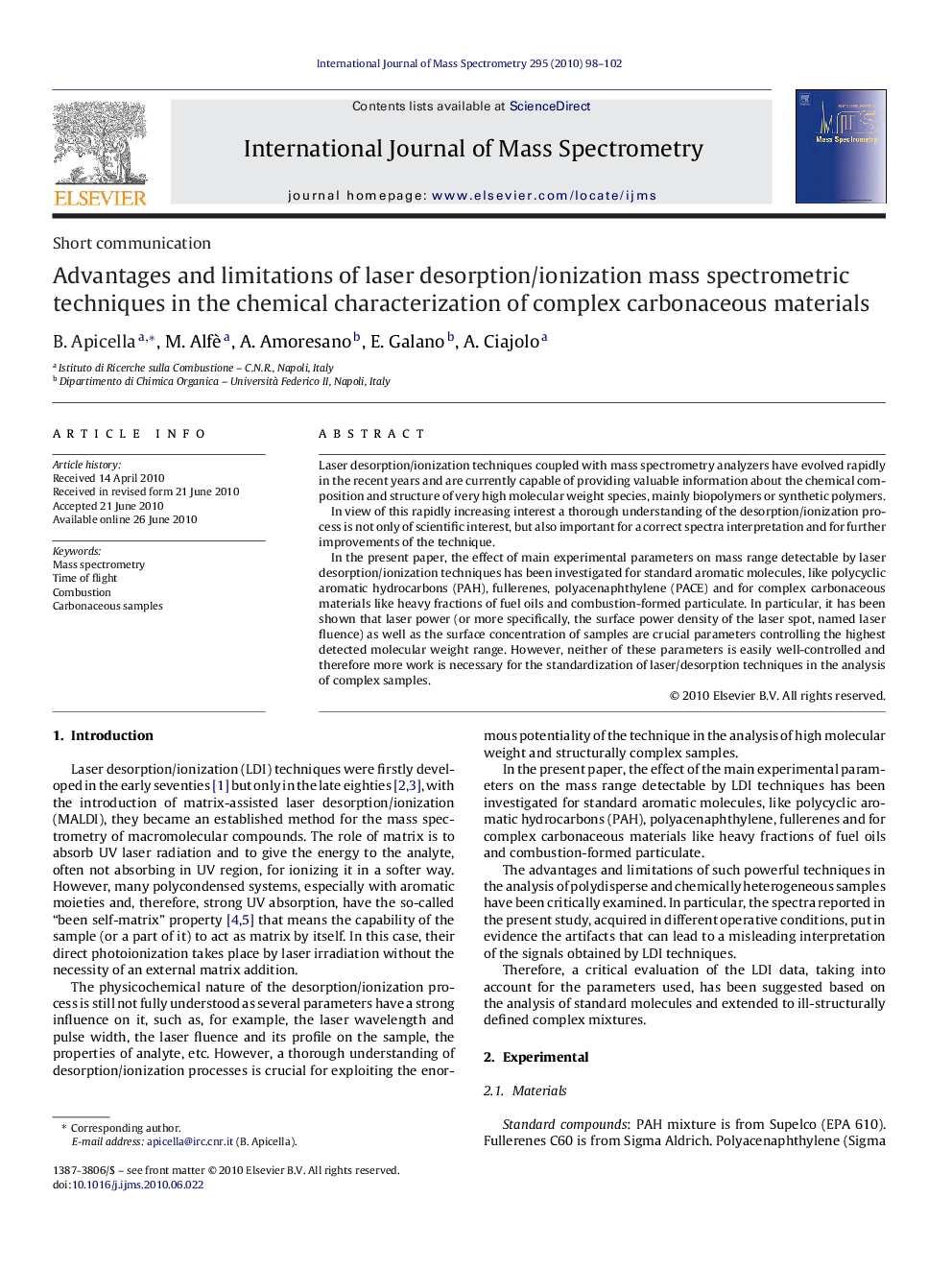| Article ID | Journal | Published Year | Pages | File Type |
|---|---|---|---|---|
| 1193843 | International Journal of Mass Spectrometry | 2010 | 5 Pages |
Laser desorption/ionization techniques coupled with mass spectrometry analyzers have evolved rapidly in the recent years and are currently capable of providing valuable information about the chemical composition and structure of very high molecular weight species, mainly biopolymers or synthetic polymers.In view of this rapidly increasing interest a thorough understanding of the desorption/ionization process is not only of scientific interest, but also important for a correct spectra interpretation and for further improvements of the technique.In the present paper, the effect of main experimental parameters on mass range detectable by laser desorption/ionization techniques has been investigated for standard aromatic molecules, like polycyclic aromatic hydrocarbons (PAH), fullerenes, polyacenaphthylene (PACE) and for complex carbonaceous materials like heavy fractions of fuel oils and combustion-formed particulate. In particular, it has been shown that laser power (or more specifically, the surface power density of the laser spot, named laser fluence) as well as the surface concentration of samples are crucial parameters controlling the highest detected molecular weight range. However, neither of these parameters is easily well-controlled and therefore more work is necessary for the standardization of laser/desorption techniques in the analysis of complex samples.
Graphical abstractThe effect of experimental parameters on mass ranges detectable by laser desorption/ionization techniques has been investigated for polycyclic aromatic hydrocarbons, fullerenes, polyacenaphthylene and complex carbonaceous materials.Figure optionsDownload full-size imageDownload high-quality image (58 K)Download as PowerPoint slide
